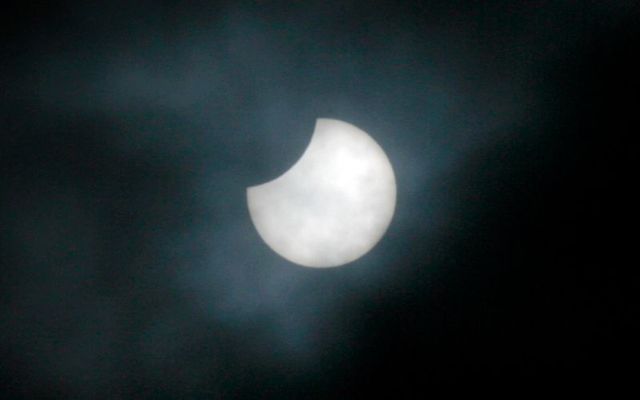While Ireland is not in the path of totality for the solar eclipse today, Monday, April 8, parts of the country will bear witness to a portion of the rare event.
“The ultimate place [in Ireland] would be on the west coast on top of a hill looking out over the ocean,” David Moore, the Chief executive of Astronomy Ireland, told the Irish Independent.
“People in the west of Ireland will see it a little bit more than people in the east.”
Officially the eclipse will start at 7:55 pm and end at 8:13 pm, reaching its maximum 0.26 magnitude at 8:10 pm, the Irish Independent noted.
Moore added: "If you're near a lake or inland, that will be good looking across a big lake.
"And you want to find somewhere where you can see right the way down to the horizon."
Moore said that in Ireland, the partial eclipse will look like "a small bite taken out of the bottom of the sun and that bite will get bigger and bigger until the sunsets."
However, the expert astronomer warned: "Even multiple pairs of sunglasses aren't good enough.
"If you're looking at the sun from Ireland, we're never going to have the total eclipse but then most of the sun is still there and it can damage your eyesight if you look at it.
"You should never use any binoculars or telescopes. I always warn people with children, they are drawn like a magnet to look into telescopes.”
“You can also project an image of the sun through a pinhole – that’s very simple.
"You get a piece of cardboard, pinch a tiny hole in and you hold a sheet of white paper a few feet behind this.
"Sunlight goes through the pinhole onto a piece of white paper and actually produces a very small crude image of the sun and you'll see it won't be round, there will be that bite taken out of it – that’s one safe way of viewing it,” he said.
Moore also told The Irish Times: “We won’t have total solar eclipse on Irish soil until 2090.
“Somebody worked out that if you sat still on the one place on the planet, you would only see an eclipse every 400 years.”
Ireland last saw a partial eclipse on October 25, 2022, and before that, June 10, 2021.
(Images of the first recorded eclipse were carved into stone cairns at Loughcrew in Co Meath over 5,000 years ago, but one of the first eclipses, of the common era, was also recorded in Ireland, by an Irish monk on June 29, 512, in the Chronicle of Ireland.)
While Ireland will only see part of Monday's eclipse, areas in North America will be treated to a total solar eclipse.
NASA says the total solar eclipse on Monday will begin over the South Pacific Ocean and will cross North America, passing over Mexico, the US, and Canada.
Not in the path of totality for the total solar #eclipse? On April 8, we'll bring totality to you by broadcasting from several locations along its trajectory, including @NASAGlenn—our only center in the eclipse’s path.
How to watch: https://t.co/H2JIZV3JH7 pic.twitter.com/71zcBAlYeZ
— NASA (@NASA) April 2, 2024
Weather permitting, the first location in continental North America that will experience totality is Mexico’s Pacific coast at around 11:07 am PDT.
The path of the eclipse continues from Mexico, entering the United States in Texas, and traveling through Oklahoma, Arkansas, Missouri, Illinois, Kentucky, Indiana, Ohio, Pennsylvania, New York, Vermont, New Hampshire, and Maine. Small parts of Tennessee and Michigan will also experience the total solar eclipse.
The eclipse will enter Canada in Southern Ontario, and continue through Quebec, New Brunswick, Prince Edward Island, and Cape Breton. The eclipse will exit continental North America on the Atlantic coast of Newfoundland, Canada, at 5:16 pm NDT.




Comments